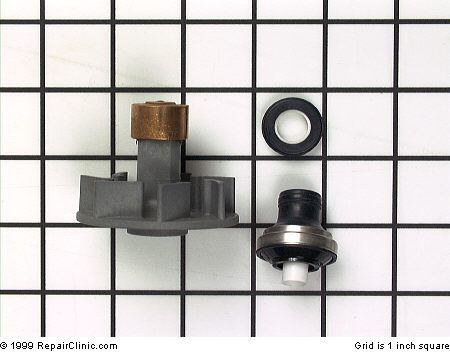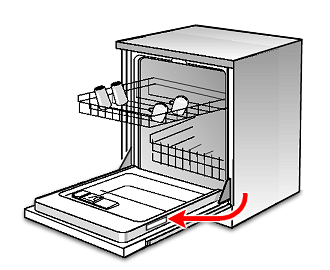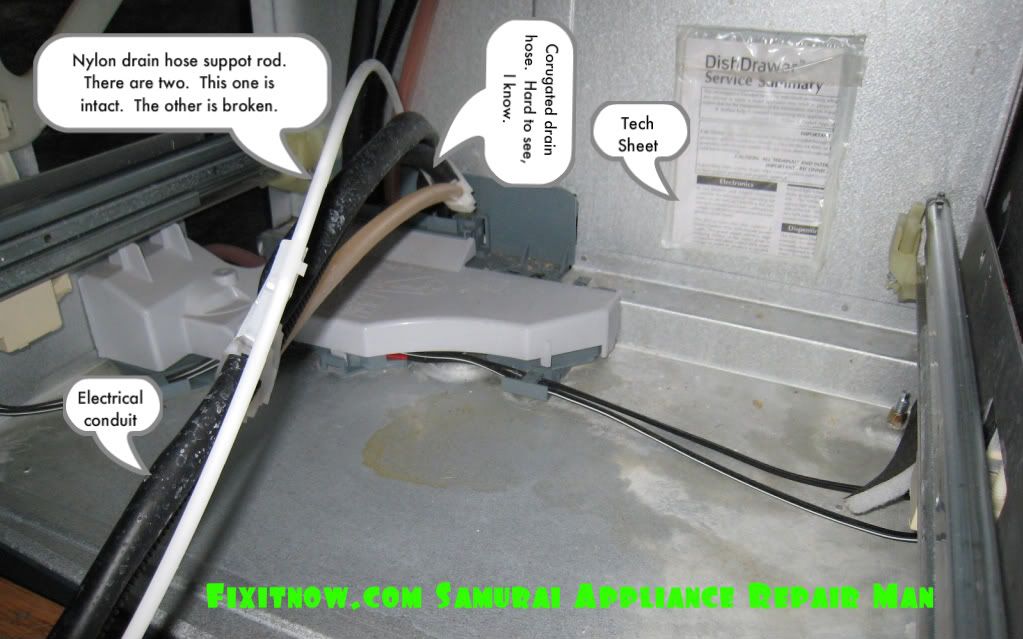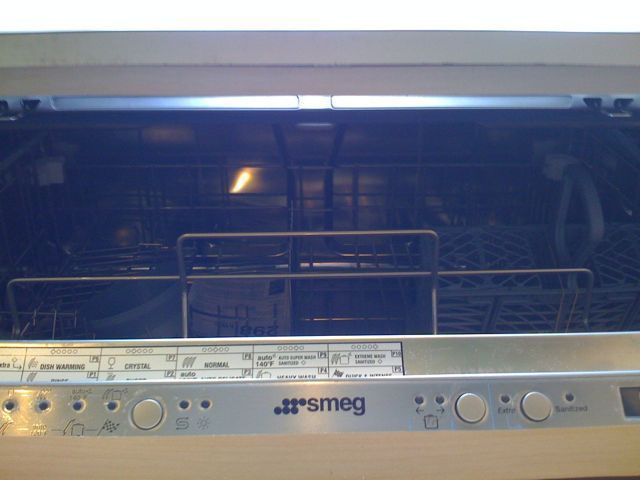These were good dishwashers made back in the day when they used big ol’ honkin’ motors that jacked up the pressure on the water and blasted your dishes clean. An example model number of this vintage is DP940PWPQ2 (these dishwashers were also sold under the Kenwhore label). Alas, they just don’t make ’em like that any more. All the manufacturers have gone to these weenie designs that use a wimpy little wash motor and separate pump.
But, like all machines, these, too, had their quirks and common repairs. The difference, though, between these older Whirlpool dishwashers and the weenie ones made today is that the repairs on these older ones were usually simple and low cost, like the one I’m about to explain to you.
One common problem with these old war horses was that it wouldn’t pump the dirty water out of the basin. Typical symptoms of this problem include:
- Crud left on dishes at the end of the wash cycle
- Dirty water in the basin at the end of the wash cycle
- Washer basin will not pump out
Like I said, this is usually a really easy problem to fix and, if you do it right, it usually doesn’t even require any parts. So, grab ‘hold of those lower cheeks and let’s get ready to r-r-r-umbl-l-l-l-l-l-e!
The older Whirlpool-built dishwashers used a check valve at the drain hose port in the pump housing to prevent gooky water from backing up into the basin. This check valve is prone to getting plugged up by what we professional appliantologists call, “gookus.” (This is a technical term reserved for use by professional appliantologists so please don’t use it unless you are one as I cannot be responsible for your safety.)
These check valves are prone to getting plugged up by all kinds of gookus. I’ve cleared some weird stuff out of these check valves such as:
With stuff like this running through the dishwasher, you can see that, most of the time, this problem is self-inflicted. In the immortal and wise words of my good friend from the Samurai Appliance Repair Forums, Sublime Master of Appliantology Reg, “It’s a dishwasher, not a disposal.”
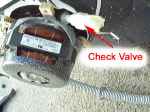 To inspect the check valve for a blockage, you’ll need to remove the access panel from the dishwasher and then remove the drain hose from the check valve. This picture shows you where it be, click it for a larger view.
To inspect the check valve for a blockage, you’ll need to remove the access panel from the dishwasher and then remove the drain hose from the check valve. This picture shows you where it be, click it for a larger view.
If the dishwasher basin is full of water and the check valve is, in fact, plugged up, then you probably won’t have to worry about water gushing out… but have a pan ready just in case. OTOH, if’n the check valve ain’t the problem and you have a basin full of gooky water, well, things could get a little messy. The Boy Scout motto applies: Be Prepared!
Usually, the plug is readily apparent as soon as you remove the drain hose from the check valve. Sometimes the cause for the plug is not immediately apparent. If you remove the drain hose from the check valve and you don’t see any gookus fall out, this just means that the blockage is further back in the check valve. In this case, you’ll need to unscrew the check valve from the pump housing to get to it.
 These check valves can be ornery to unscrew but persevere and ye shall overcome. Just be careful you don’t pull to the side or you might snap off the check valve, leaving part of it inside the pump housing, as shown here.
These check valves can be ornery to unscrew but persevere and ye shall overcome. Just be careful you don’t pull to the side or you might snap off the check valve, leaving part of it inside the pump housing, as shown here.
OK, that’s all there is to this bit of rocket science. Now, as our Lord Fixus done told us, “Go ye forth, therefore, and make Apprentices of all nations.”
To learn more about your dishwasher, or to order parts, click here.
 Service diagnostic mode is one of those indispensable troubleshooting tools built into some appliances with electronic controls. Although electronics on wet appliances, such as dishwashers, is a flagrant violation of the 5th Law of the Prophecy, this is somewhat mitigated by having a service diagnostic mode to help troubleshoot it.
Service diagnostic mode is one of those indispensable troubleshooting tools built into some appliances with electronic controls. Although electronics on wet appliances, such as dishwashers, is a flagrant violation of the 5th Law of the Prophecy, this is somewhat mitigated by having a service diagnostic mode to help troubleshoot it. 


